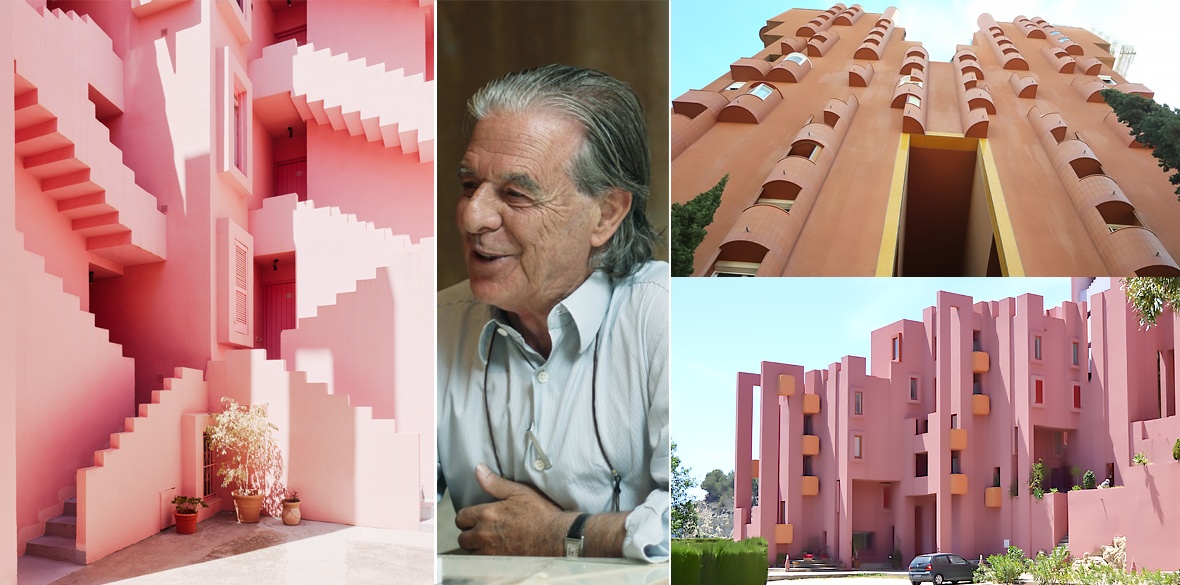This is the last article you can read this month
You can read more article this month
You can read more articles this month
Sorry your limit is up for this month
Reset on:
Please help support the Morning Star by subscribing here
RICARDO BOFILL LEVI, the Catalan architect whose studio retained a poet and a philosopher, has died on January 14 aged 82.
A Marxist activist during the Franco dictatorship, he was expelled from university in Barcelona, fled Spain for Geneva and only returned in the mid-60s when he assembled like-minded architects to set up Taller de Arquitectura/Architecture Workshop and located it in a converted cement factory in Barcelona. They were uniquely focused on providing housing solutions.
Bofill’s is a socially aware architecture that addresses the complex problems of urban communal living with rare courage and design flair. The projects were invariably characterised by a flamboyance of form never seen before.
They will be used as a stage for Hollywood films and video games, with the staircases reminiscent of the impossibly deceptive arrangements of the work of Maurits Cornelis Escher.
The practice’s employment of colour was nothing short of spectacular — as seen on these photos — red on the outside with cool ultramarines and terracotas, and freshness of jade and pine greens on the inside.
Bofill’s aim was to create “enclaves” that would be separated from the “chaos” of the surrounding city — turned inwards and “looking in,” into inner yards with fountains where flats are interconnected internally by a spectacular “walkways in the sky,” balconies and terraces with breathtaking vistas.
The living in such dense proximity mimicked medieval Barcelona or north African kasbahs.
“I am a person of the Mediterranean, my influences come from Italy but also Egypt and north Africa — in fact I am a nomad whose compas is nevertheless the Mediterranean — a sea of wars, tragedy, emigration and disaster,” he said once.
Bofill has often been inacurately classed as postmodernist to lend credibility to the vacuous aesthetic nonsense lauded as architectural avant garde.
He had, however, a soft spot for classicism and in 1982 built Les Espaces d’Abraxas housing estate in Noisy-le-Grand in the eastern suburbs of Paris, which astonishes with its scale and intricate detail immediately becoming a “must-have” film location — the Hunger Games trilogy in particular.
In fact, if anything, Bofill with his profound social concerns — much like his contemporary Neave Brown of north London Alexandra Estate fame — the singular discipline of form, represents the swan-song of large-scale modernism, and a glorious song it is.
“Modern architecture has run out of ideas, looks the same and has no longer any personality,” he would say perceptively.
Bofill’s embracing spacial solutions are imbued with a strong and infectious sense of joie de vivre. The tenants of the legendary Walden 7 run regular tours for thousands of visitors every year. Walden has 446 flats over 16 floors, a communal roof terrace with two swimming pools and five courtyards.
The 50-flat Muralla Roja/Red Wall — in La Manzanera, Calpe, Spain — is probably the most iconic building in the Western world and its labyrinthine, Escheresque layout the most photographed.
The person might have gone but the opus and social solidarity ideas that inspired it remain for all to see.












